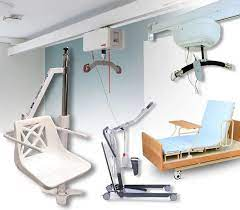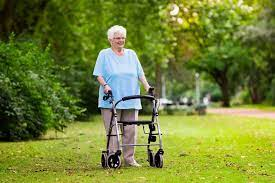In the realm of healthcare, where compassion meets expertise, the role of care home equipment cannot be overstated. Care home equipment in practice encompasses a broad spectrum of tools and devices designed to enhance the well-being of residents and streamline healthcare delivery. Let’s delve into the intricacies of care home equipment, exploring its significance, impact, challenges, and the promising future it holds.
Essential Care Home Equipment
- Hospital Beds
- Adjustable Features for Comfort
- Safety Rails and Fall Prevention Measures
- Mobility Aids
- Wheelchairs, Walkers, and Canes
- Customizing Aids Based on Resident Mobility Levels
- Monitoring Devices
- Vital Sign Monitors
- Fall Detection Systems
- Medication Management Systems
- Automated Dispensing Units
- Integration with Electronic Health Records
The Impact of Quality Equipment on Patient Care
Quality care home equipment goes beyond mere functionality; it becomes a catalyst for improved healthcare services.
- Enhanced Comfort and Safety
- Ergonomic Designs for Resident Comfort
- Safety Features to Prevent Accidents
- Efficient Healthcare Delivery
- Streamlined Processes for Staff
- Quick Response to Resident Needs
- Positive Psychological Effects on Residents
- Boosting Resident Confidence
- Fostering a Sense of Independence
Selecting the Right Care Home Equipment
Choosing the right equipment requires a thoughtful approach, considering various factors.
- Assessing Resident Needs
- Tailoring Equipment to Individual Requirements
- Involving Residents in Decision-Making
- Considering Space and Layout
- Maximizing Space Efficiency
- Creating Accessible Environments
- Budgetary Considerations
- Balancing Quality with Affordability
- Long-term Cost Savings vs. Initial Investment
Trends in Care Home Equipment
The landscape of care home equipment is evolving, embracing cutting-edge trends.
- Technological Advancements
- Integration of Smart Devices
- Remote Monitoring Systems
- Sustainable and Eco-Friendly Options
- Environmentally Conscious Equipment Choices
- Long-lasting, Durable Materials
Challenges in Implementing Care Home Equipment
Despite the benefits, introducing new equipment comes with its share of challenges.
- Resistance to Change
- Overcoming Staff and Resident Resistance
- Communicating Benefits Effectively
- Staff Training and Adaptation
- Ensuring Proficiency in Equipment Usage
- Ongoing Training Programs
Case Studies: Successful Implementation Stories
Real-world examples showcase the transformative power of quality care home equipment.
- Improved Patient Outcomes
- Faster Recovery Times
- Reduced Hospitalization Rates
- Staff Satisfaction and Efficiency
- Streamlined Workflows
- Increased Job Satisfaction
Future of Care Home Equipment
The future holds a range of exciting possibilities for the evolution of care home equipment.
- Anticipated Technological Innovations
- Robotics for Patient Assistance
- AI-driven Healthcare Assistance
- Integrating Artificial Intelligence
- Predictive Analytics for Resident Health
- Personalized Care Plans
Regulatory Compliance and Standards
Ensuring safety and quality is paramount in the care home supply industry.
- Ensuring Safety and Quality
- Adhering to Industry Standards
- Regular Inspections and Compliance Checks
- Legal Obligations for Care Home Facilities
- Meeting Government Regulations
- Documentation and Reporting Requirements
Cost-Benefit Analysis of Quality Equipment
Investing in quality equipment proves to be a wise decision with numerous advantages.
- Long-term Savings
- Reduced Maintenance Costs
- Avoidance of Emergency Repairs
- Improved Reputation and Attraction of Residents
- Positive Word of Mouth
- Attracting Families Seeking Quality Care
User Testimonials
Real-life experiences highlight the tangible benefits of upgraded care home equipment.
- Real-life Experiences with Upgraded Equipment
- Testimonials from Residents and Families
- Before-and-After Stories
- Positive Changes in Quality of Life
- Improved Comfort and Independence
- Enhanced Social Engagement
The Role of Care Home Equipment in Elderly Independence
- Promoting Autonomy
- Empowering Residents to Take Charge
- Designing Spaces for Independence
- Reducing Dependence on Caregivers
- Self-sufficiency Through Well-chosen Equipment
- Building Confidence in Daily Activities
Maintaining and Upgrading Care Home Equipment
Sustainable practices ensure the longevity and effectiveness of care home equipment.
- Regular Inspections and Maintenance
- Preventive Measures for Longevity
- Swift Resolution of Issues
- Knowing When to Upgrade
- Monitoring Technological Advances
- Resident Feedback as a Key Indicator
Manual Handling
manual handling is not merely a task; it’s a skill that, when executed with precision and adherence to safety guidelines, contributes significantly to a secure and efficient workplace. From proper, lifting equipment and techniques to the incorporation of technology, the landscape of manual handling is evolving, aiming to create work environments where employees thrive without compromising their well-being.
Essential Techniques for Safe Manual Handling
- Proper Lifting Techniques
- Bend Your Knees, Not Your Back
- Keeping the Load Close to the Body
- Teamwork in Manual Handling
- Effective Communication Among Team Members
- Coordinated Efforts for Bulky or Heavy Loads
- Use of Manual Handling Equipment
- Introduction to Mechanical Aids
- Ensuring Equipment is Fit for Purpose
- Risk Assessment in Manual Handling
- Identifying Potential Hazards
- Implementing Mitigation Strategies
The Impact of Ergonomics on Manual Handling
- Ergonomic Principles in the Workplace
- Designing Workspaces for Efficiency
- Tailoring Workstations to Individual Needs
- Training and Education on Manual Handling
- Importance of Ongoing Training
- Empowering Workers with Knowledge
Common Challenges in Manual Handling
- Overcoming Resistance to Change
- Addressing Attitudes Toward Safety Measures
- Fostering a Culture of Safety
- Addressing Different Manual Handling Scenarios
- Tailoring Techniques for Various Loads
- Adapting to Unique Workplace Challenges
Handling Equipment
handling equipment is the backbone of industries, shaping the efficiency and safety of day-to-day operations. From manual tools to sophisticated machinery, the right moving and handling equipment, used with precision and adherence to safety protocols, contributes significantly to workplace success. As technology continues to advance, embracing modern handling solutions becomes paramount for businesses aiming to stay competitive and prioritize the well-being of their workforce.
Controlled and Easy Access
controlled and easy access is the cornerstone of modern security strategies. Striking the right balance ensures we deliver both robust protection against unauthorized entry and a seamless experience for individuals. Whether in physical spaces, digital environments, or smart homes, the synergy between control and ease is essential for fostering a secure and user-friendly world.
In conclusion, care home equipment is the silent hero in ensuring the well-being of residents. Its impact, both tangible and psychological, on patients is immeasurable. As the industry continues to evolve, the commitment to providing quality care home equipment remains paramount for a brighter and healthier future.
FAQs
- How often should care home equipment be updated?
- Regular updates are recommended, ideally every 5-7 years, to incorporate technological advancements and ensure optimal performance.
- Are there government regulations for care home equipment?
- Yes, government regulations dictate safety and quality standards for care home equipment to protect residents and ensure compliance.
- What are the key considerations when selecting care home equipment?
- Resident needs, space requirements, and budget considerations are crucial factors in selecting appropriate care home equipment.
- Can upgraded equipment improve the reputation of a care home?
- Absolutely, upgraded equipment contributes to a positive reputation, attracting residents and families seeking high-quality care.
- How do care homes ensure staff are proficient in using new equipment?
- Ongoing training programs, workshops, and clear communication are essential to ensure staff proficiency in using new care home equipment.

